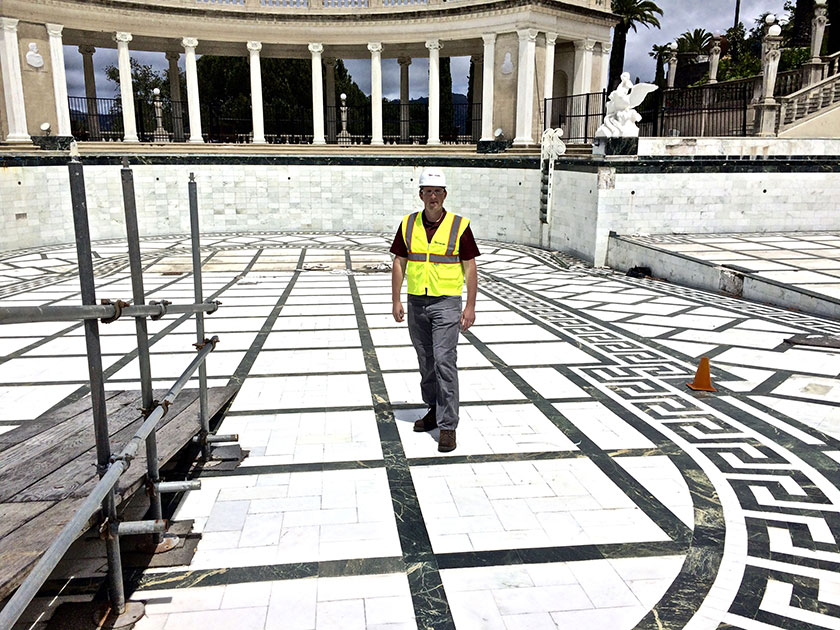Construction & Mechanical Defects
Swimming pools are surprisingly complex, both structurally and mechanically. Many things can go wrong in both areas and the costs of correcting structural, or pool mechanical and the associated piping defects can be catastrophically expensive for both residential and commercial pool owners.
Pool in-ground structures, typically made of reinforced concrete, must be properly engineered to withstand the project location’s geotechnical conditions. Even pre-manufactured metallic type pool structures typically have a reinforced concrete floor or support slab and needs to be engineered to withstand the prevailing geotechnical conditions. This means gathering accurate geotechnical data, which in turn serves as the basis for the pool shell’s design. Issues such as the thickness of the shell in the pool floor and walls, frequency and size of structural steel, deep foundation support structures such as drilled piers, geotechnical provisions such as underdrain systems, and many others must all be properly engineered and installed to ensure the long-term performance of the pool structure.
A common misconception is that pool structures can withstand more movement than the surrounding buildings. Quite the contrary, pools are designed to hold water and usually have stricter tolerances for movement than the surrounding buildings whether the pool has a skimmer system or perimeter gutter system for their overflow system.

When designed correctly per industry standards and applicable codes (e.g. building, health, etc.), pool shells can exist for a long period of time with low risk of problems. However, when a pool shell is not properly engineered, factors such as expansive soils, freeze/thaw conditions or differential settlement, among others, dramatically increase the chance of structural failure.
Much of the same is true for mechanical engineering. Swimming pool systems encompass a variety of crucial technical considerations including piping size and layout, flow rate and velocity, pump size and performance characteristics, filter type and size, heater type and size, control technology, equipment layout, electrical service and distribution, grounding and bonding, and chemical treatment. Improper system design and integration can dramatically impact safety, water quality, energy efficiency, and system life.
In both areas, the specific cause of a given failure can involve a variety of factors and scenarios; assigning blame and liability often becomes the focus of costly insurance claims and litigation. RRFE is uniquely qualified to navigate the scores of technical details when investigating the nature of structural or mechanical failure:
Reynolds is a Registered Professional Engineer in 16 states. He has extensive experience designing and overseeing the construction administration of swimming pools and investigating the spectrum of mechanical system and structural failures. Reynolds has designed more than 200 major commercial swimming pools and spas nationwide. In obtaining his Bachelor of Science in Civil Engineering and through his professional experience designing commercial swimming pools and investigating structural failures, Reynolds is accustomed to reviewing the often-complex seismic and geotechnical issues that play a major role in swimming pool projects.